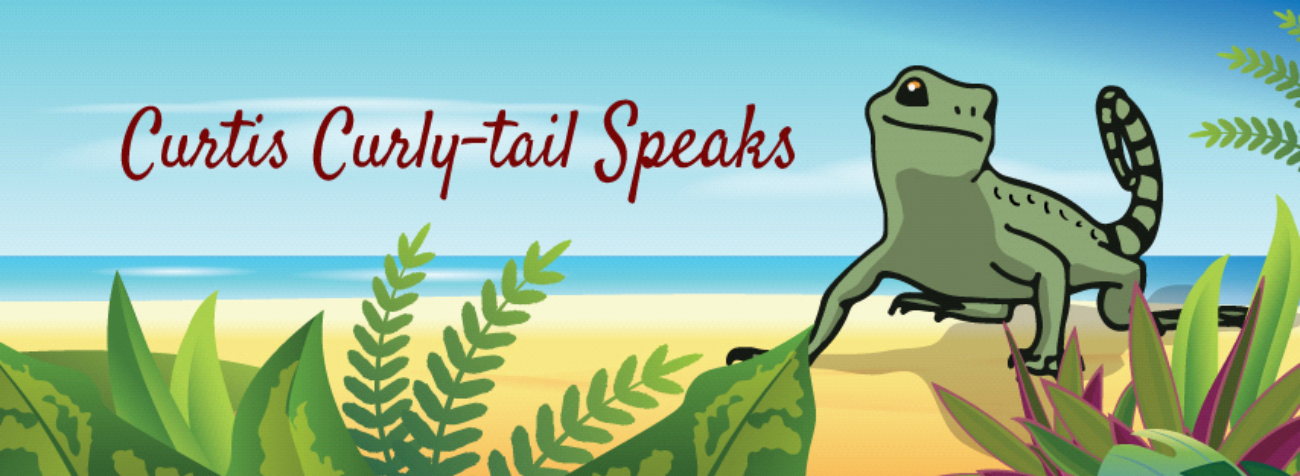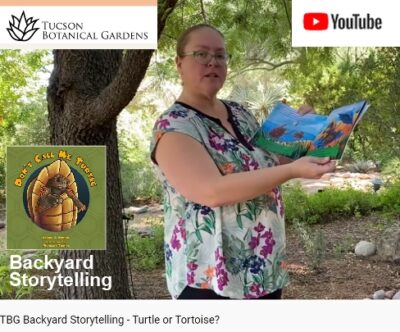Cacti Tasting Notes
With the winter rains, the barrel cacti were particularly plump this spring. The common name is the fishhook barrel cactus (Ferocactus wislizenii). This barrel-shaped cactus is known for its long, hooked spines and yellow fruit clustered at the top. These relatively long-lived plants are native to Tucson and frequently found in yards and native deserts. They tend to be on the short side, about four feet high.
The cacti help with telling people directions since they lean to the southwest. I double-check every one I see to ensure it is leaning in the correct direction. So far, they all do.
This is the cactus touted in Westerns as a good water source in the dry desert. However, the water inside the barrel cactus contains too much oxalic acid and would cause diarrhea. Diarrhea is not a good idea when one is dying of dehydration.
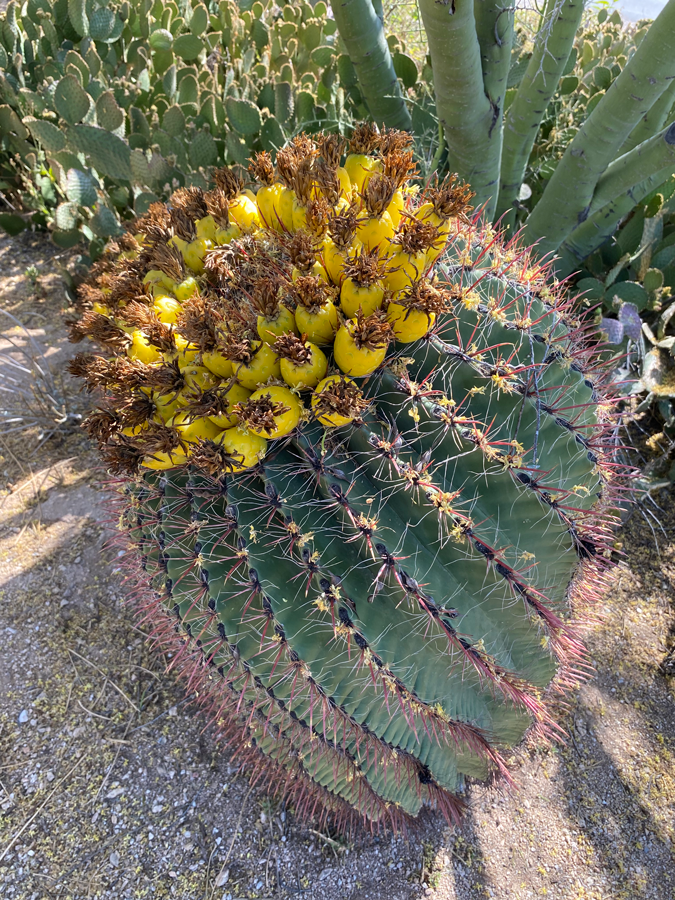
Ripe and Ready
The fruit of the barrel cactus is the main topic of this blog. Every year, my barrel cacti produce yellow fruit. I’ve tried feeding them to my tortoises, but they don’t like them, although they readily eat prickly pear and saguaro fruit even though they have spines. I’ve noticed that the barrel fruit is the last to be eaten by the wild animals. It’s good to have something to eat when all the other tastier tidbits have been consumed or dried up. The fruit lasts until the following season’s flowering!
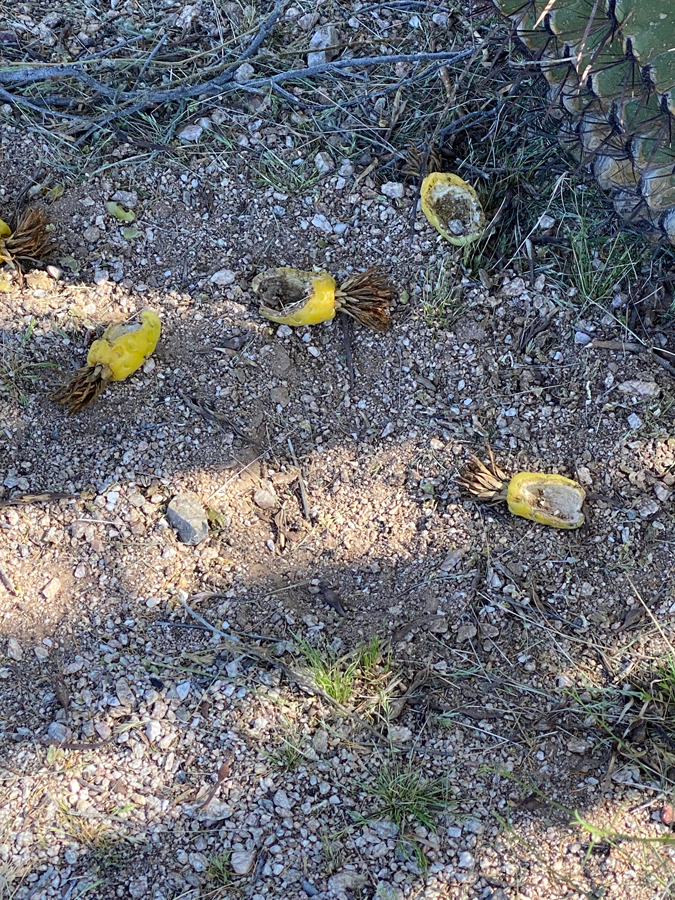
The fruits start green and are ripe when they turn yellow. They are wonderfully spine-free—a nice change from those prickly pear fruits.
I’ve read that the fruit can be eaten raw or cooked. The interior is filled with many tiny black seeds, which are a good source of protein, according to the sources. The seeds can be ground into a meal after toasting. However, looking at how tiny those seeds are, I doubt they’re worth all that effort.
The Taste Test
The particularly plump fruit this year tempted me to taste it. The fruit is described as tart and lemony. I like tart and lemony. It could be like passionfruit. I love the flavor of passionfruit. Many articles mentioned the tart flavor, but very few noted that the pulp is mucilaginous. Interesting. I like okra and can tolerate it. Sometimes, I enjoy the mucilaginous texture. I had been warned.
The time came for me to taste one. After all, they are supposedly packed with nutritional components. They are rich in vitamins A and C, a fact that I found particularly interesting. Besides satisfying my curiosity, this could be nutritious.
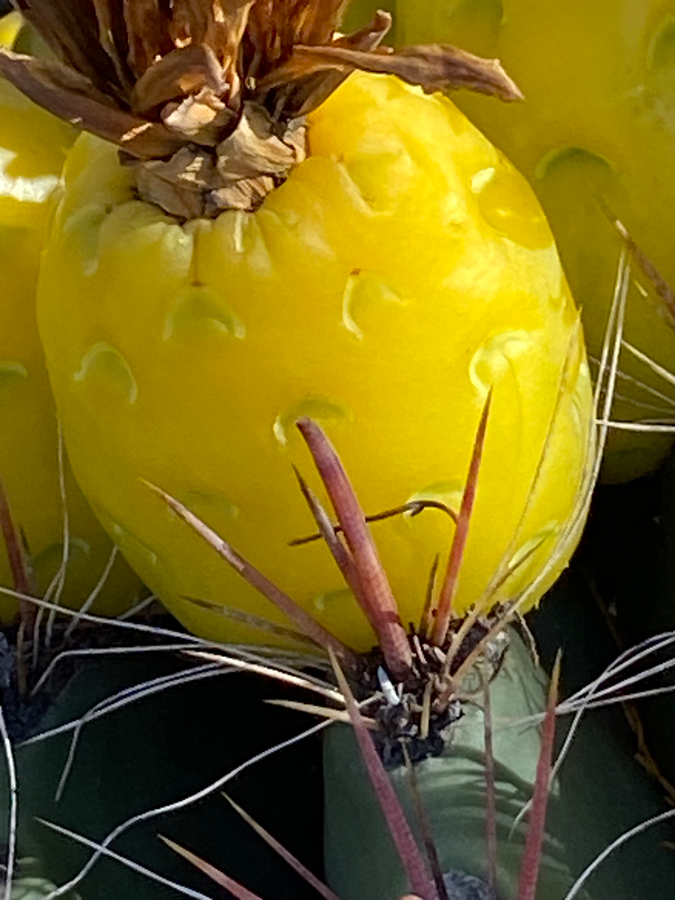
I collected a lovely, juicy-looking fruit from the top of one of my barrel cactuses in the front yard. I sliced a bit of the flesh off and tasted it. The first sensation was the burst of citrus tartness, which was fairly pleasant. However, the most apparent aspect was the unexpected mucilaginous goo instead of the expected plant juice. This gooey texture was a bit off-putting, but I could see how it might be tolerable for some. The native Americans must have been starving to eat these fruits. Maybe they had a way of preparing them that improved the consistency.
After tasting this fruit, I looked for recipes. Indeed, there was a way to make it more palatable. Most recommend adding it to a sweet dish. That sounds like an excellent idea, especially if the pulp is dried. The fruit can be cooked with agave syrup to make a jam, jelly, or chutney. Thin slices can be simmered with a bit of water and sugar. The pulp can be added to baked goods or as a topping on salads.
The barrel cactus fruit’s flavor is pleasant, but the gooeyness is too much for me. I’ll have to explore other methods of preparation. Or I’ll leave them to the native creatures outside who enjoy them. If not enjoy, need them for survival. They are a pretty yellow, at the very least.
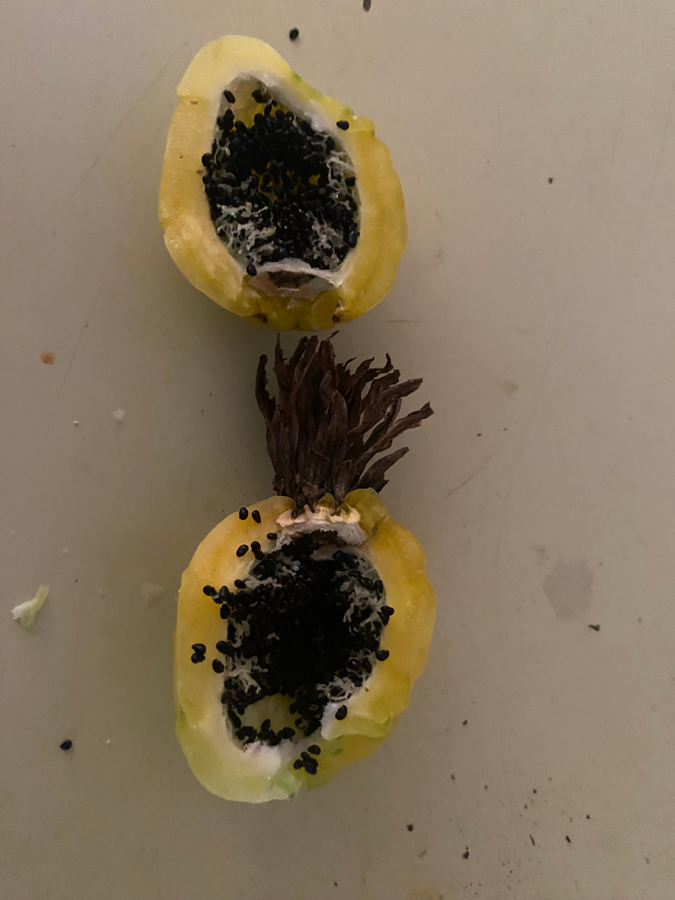
To learn about our latest science-based children’s books and workbooks, to read our latest blog posts about reptiles, birds, cats, and gardening, in a variety of locations, and about how the books come to be, what inspires an author to write, and many more interesting aspects of the publishing business, fill in the box below and we will add you to our email list.
Thank you!
